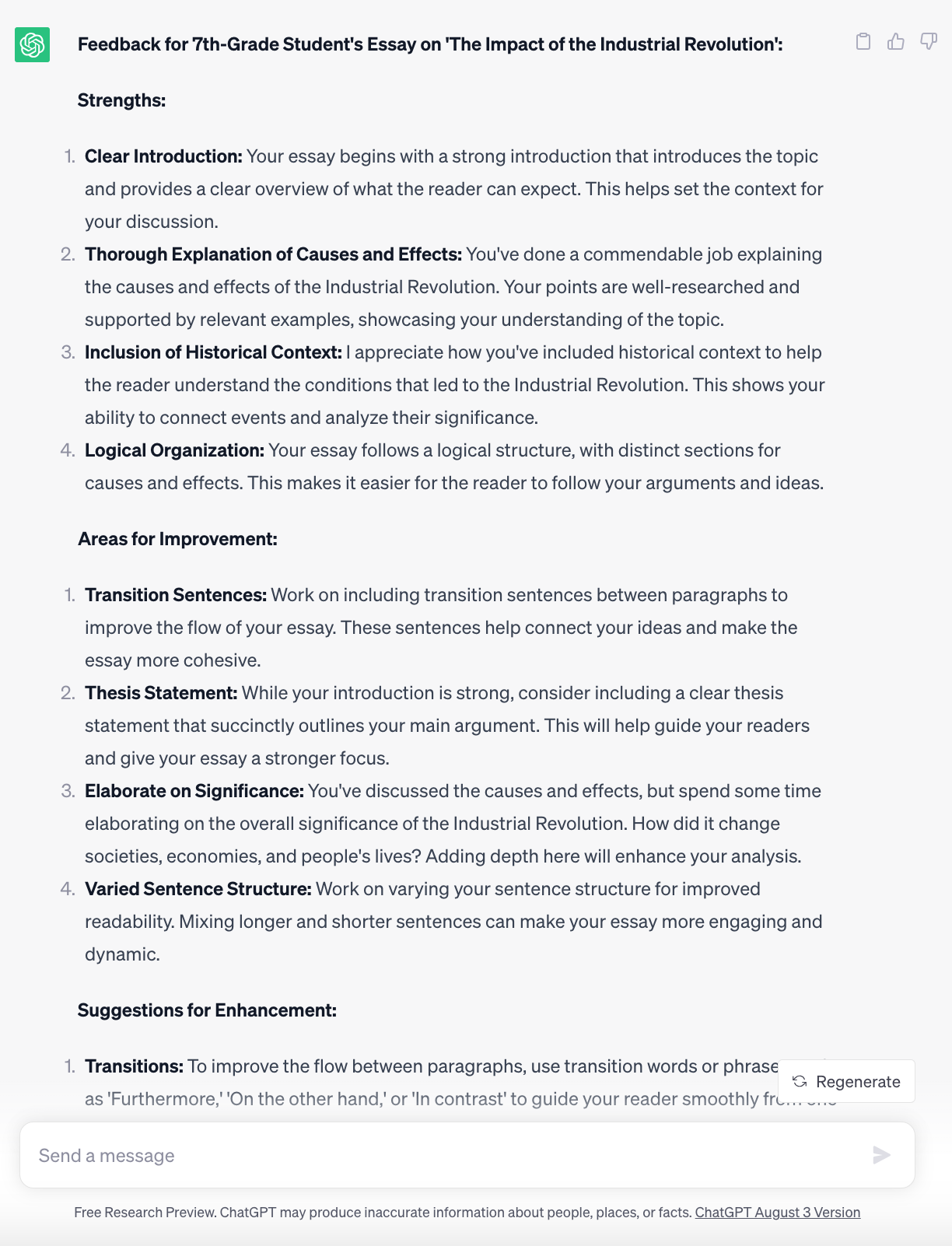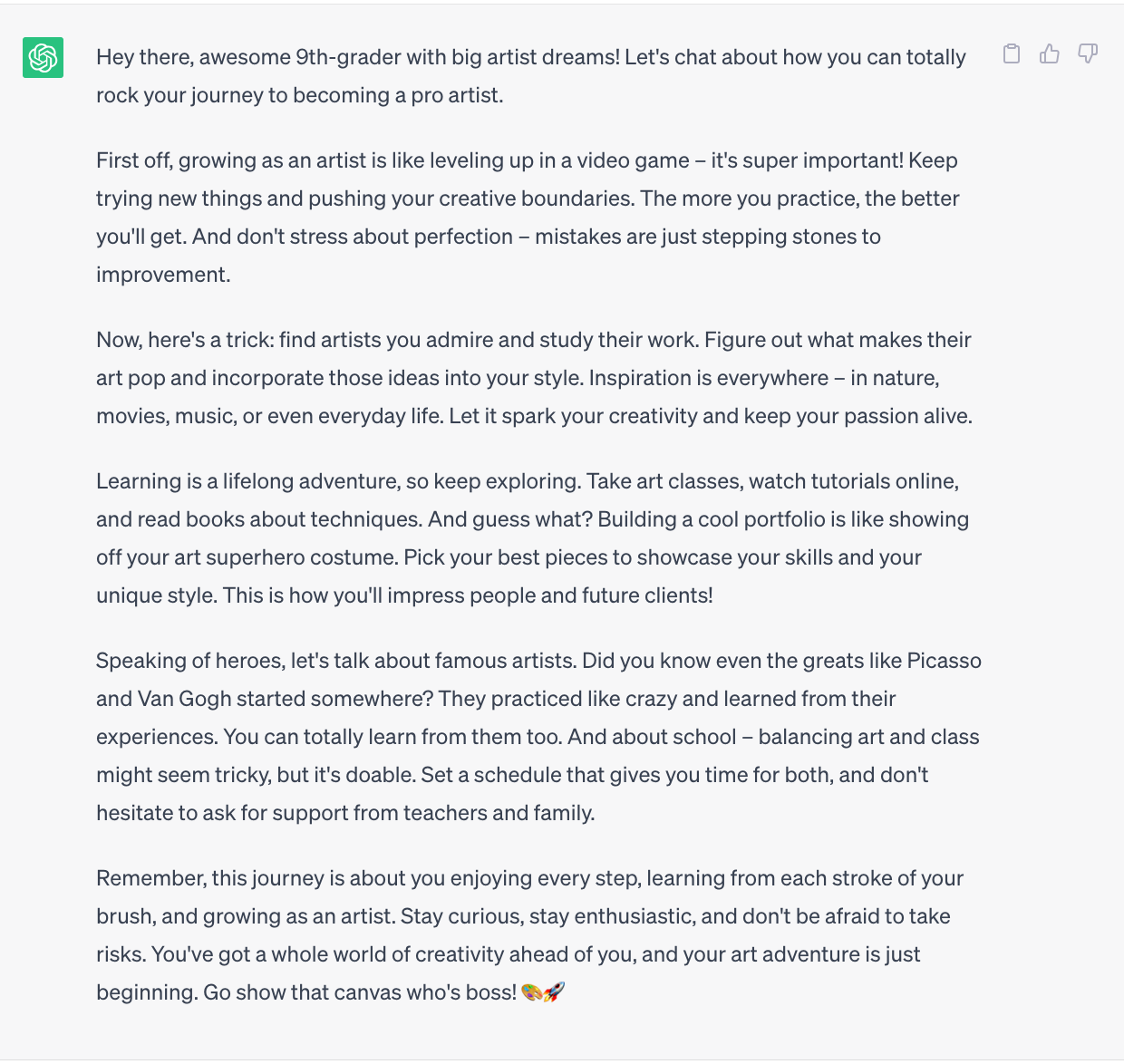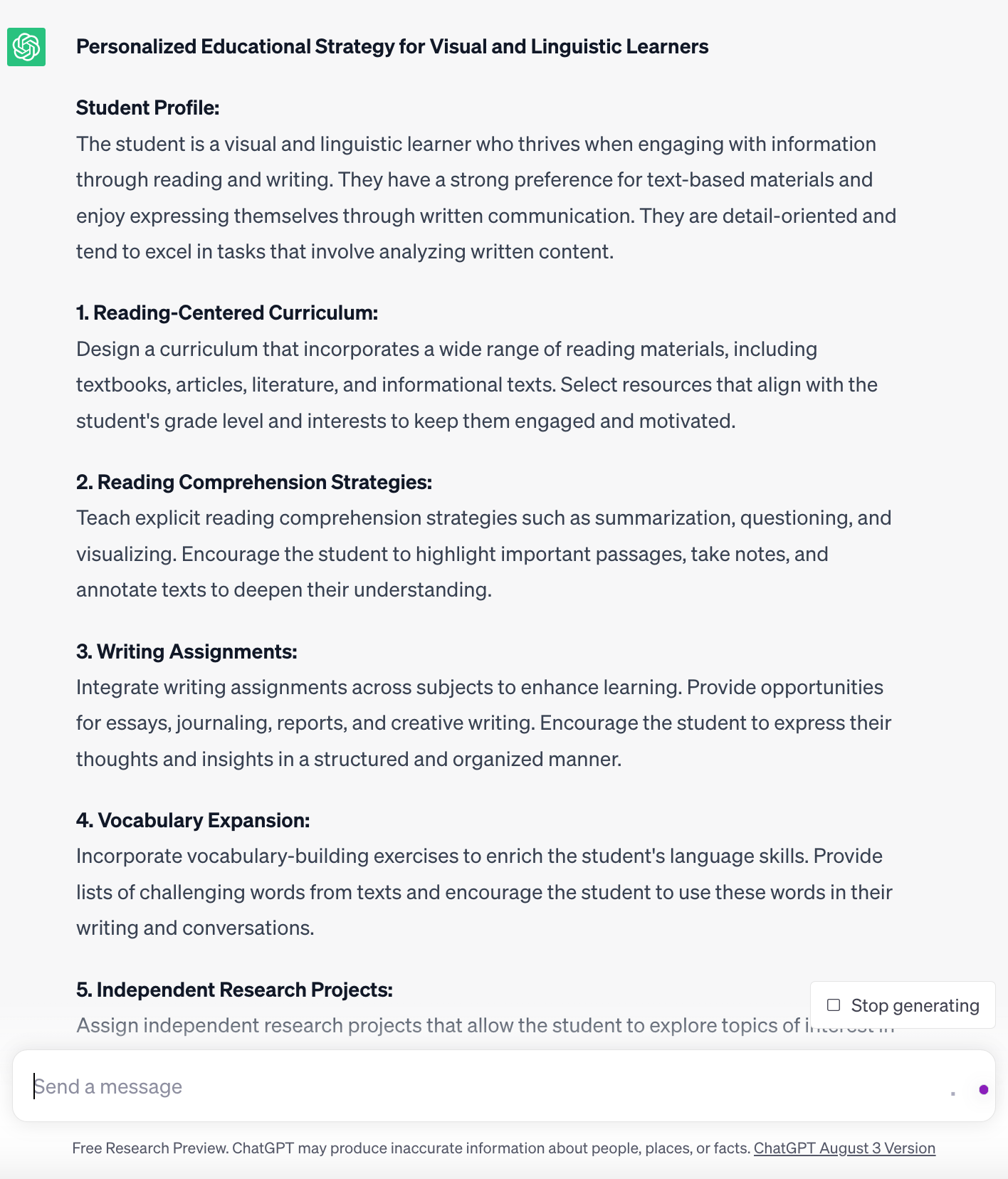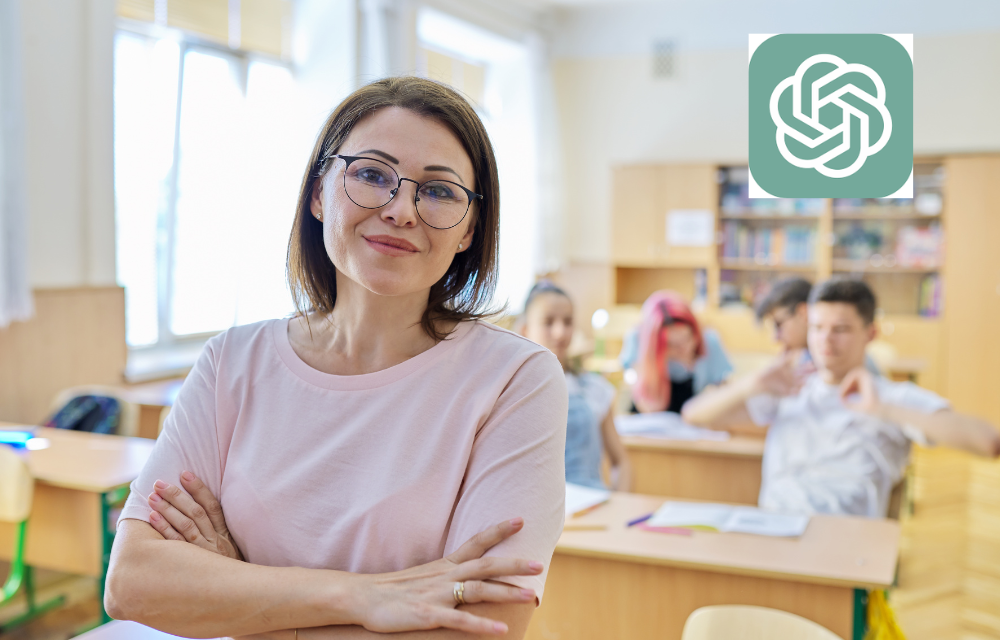The Pros and Cons of ChatGPT for Teachers: An Analysis of the Benefits and Challenges of AI in Education
ChatGPT has found various purposes in writing essays, poems, coding, and explaining complex topics thanks to its ability to mimic human speech and provide answers.
It has become an essential tool for many individuals, particularly students, because it saves time, increases productivity, and produces high-quality work.
However, its use has raised ethical concerns, with some schools banning it as a form of cheating while others have embraced its benefits.
Despite differing views, there are numerous benefits to using ChatGPT. While it may not be recommended for students, teachers and many others can use its features.
Therefore, this article will explore how teachers can benefit from using ChatGPT to enhance their teaching and simplify their workload.
Benefits of using ChatGPT for teachers
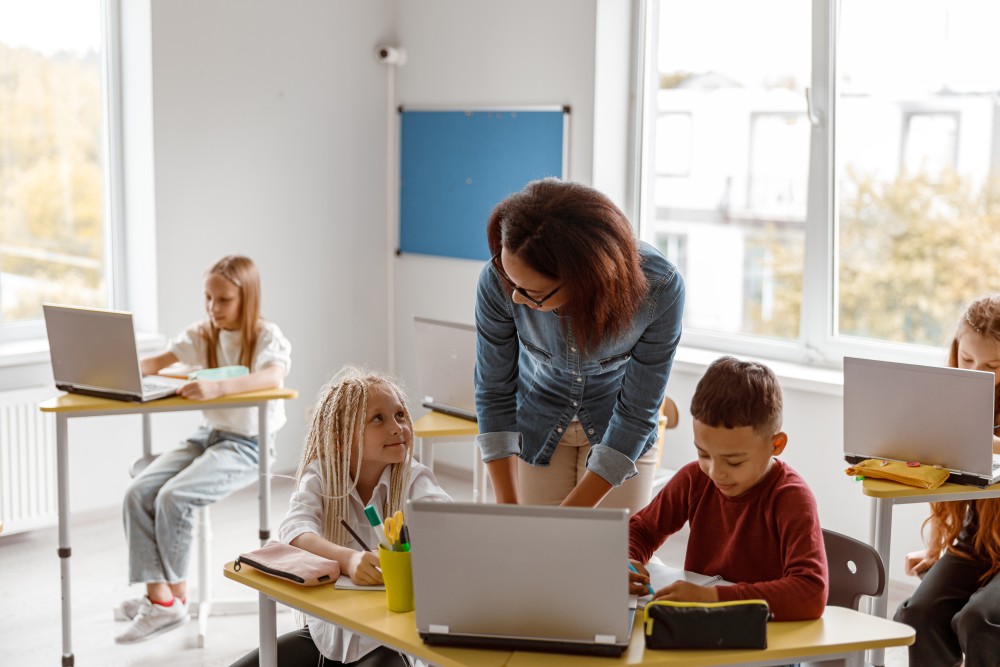
⭐ Save time and effort for lesson planning and research.
When creating lesson plans, giving it your full attention and dedicating many work hours is important.
Lesson plans should be detailed and include essential answers to questions such as "What do I want my students to learn?", "What are the most important concepts they should remember?", “What are all the necessary steps to achieve a specific goal?” and “What assessment methods should I use?”
Fortunately, with the assistance of ChatGPT, teachers can create solid lesson plans and save countless hours of manual work. ChatGPT can generate a response within seconds, providing a solid foundation for teachers to continue working and refining their techniques.
⭐ Enhance personalized learning and differentiation.
Everyone has their ways of studying and processing information. Teachers must adapt their learning lessons and teaching styles so that every student can get the most out of their classes.
ChatGPT can help teachers generate ideas on different teaching methods to help students learn their subjects more easily.
Furthermore, teachers should also be open to other learning methods and inspire kids to be independent and develop their ways of learning.
ChatGPT can once again assist teachers by generating ideas on motivating kids to do this, thus boosting productivity in the whole classroom.
⭐ Foster student engagement, proactiveness, and collaboration.
Engagement, proactiveness, and collaboration are three important factors when lecturing.
Engaged students actively participate in the lectures by asking questions or including themselves in a discussion, indicating increased interest in the subject.
Proactiveness is another personality trait that should be nurtured in students, as this will teach them to think a few steps ahead of time and help them to manage their time properly, which is crucial during the busy school year.
Finally, collaboration is a huge part of the student's life. Many school projects involve actively collaborating with classmates and communicating with them.
ChatGPT can be a useful source for generating ideas on developing and nurturing these traits in students.
⭐ Support creativity and innovation.
Students must learn to think and develop creative solutions for different tasks.
ChatGPT can help you create games and activities to stimulate students’ creativity, problem-solving abilities, and innovation.
Challenges of using ChatGPT for teachers
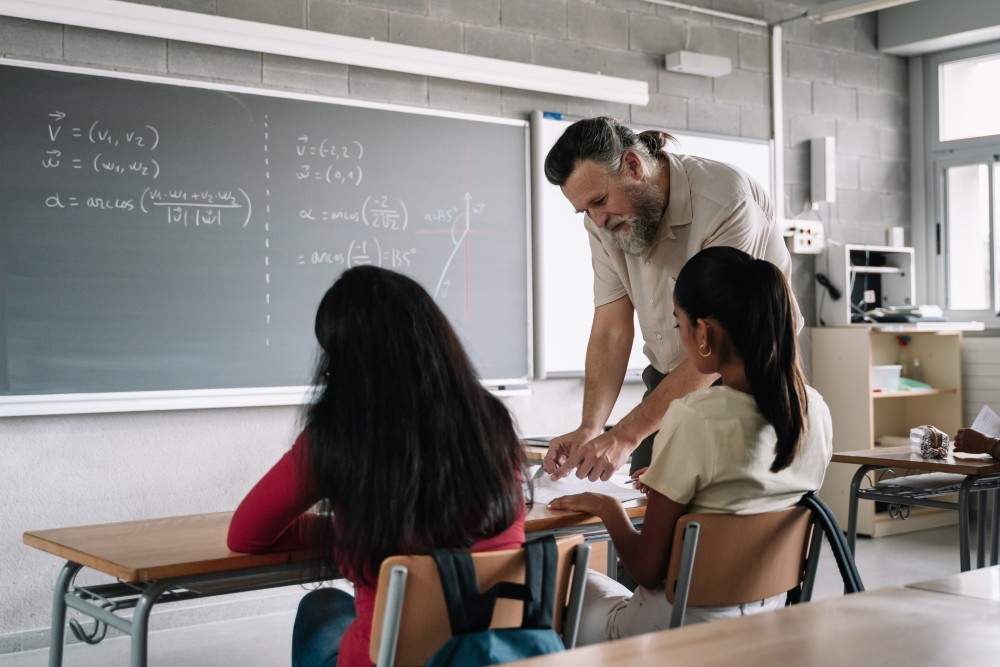
🔴 ChatGPT's quality might have declined.
Several users have expressed concern about ChatGPT's declining quality, with responses not being as efficient as before. Consequently, using ChatGPT has become more demanding as users have to spend more time to obtain accurate results.
🔴 Pose ethical and pedagogical dilemmas.
The use of ChatGPT for school assignments has become more common, leading to questions about its ethical implications. Numerous schools prohibit students from utilizing ChatGPT to complete tasks because it has been considered unethical.
🔴 Require technical skills and resources.
Although using the AI chatbot is simple, some teachers may require guidance in creating prompts and achieving satisfactory results.
🔴 Raise privacy and security issues.
According to ExpressVPN, ChatGPT gathers data using two methods - bulk data and users interacting with the chatbot.
The collected data consists of log data (including IP address, browser information, and interaction details), usage data (such as location and device information), device information, cookies, user-generated content, communication information, social media information, and account information.
ExpressVPN explains that since OpenAI retains all user content, including private information, the data is never deleted.
🔆 Read Also: 15 Best AI Tools for Teaching
ChatGPT prompts for teachers.
Create a curriculum
Design a comprehensive curriculum plan for a year-long 7th-grade history course focusing on 'World History Through the Ages.' The plan should include a mix of topics from different regions and periods to engage students in critical thinking. Incorporate interactive activities and projects encouraging students to explore historical concepts in depth. The curriculum should be divided into thematic units, with clear learning objectives, assessments, and suggested resources to enhance the learning experience.
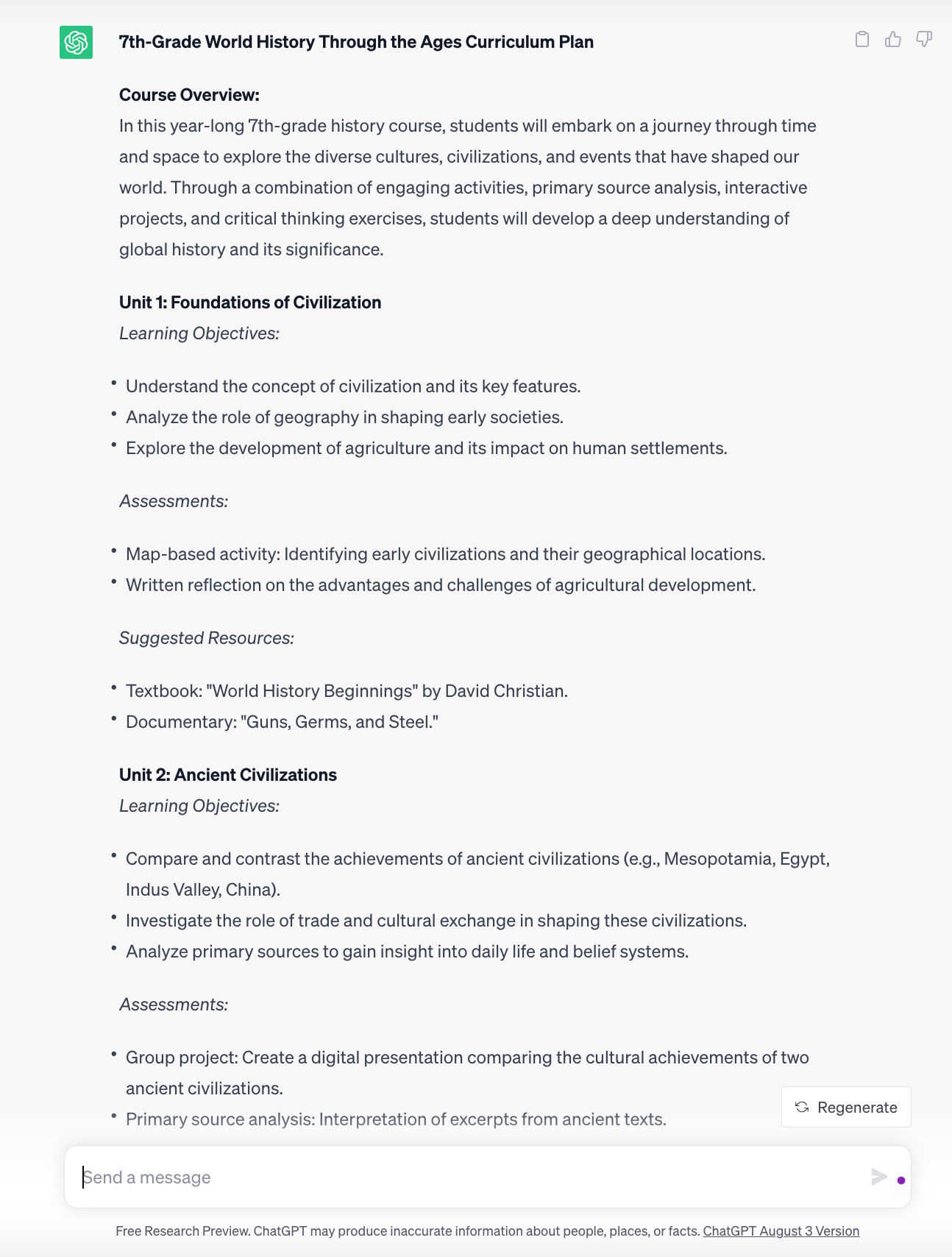
Provide feedback
Provide feedback on a homework assignment essay written by a 7th-grade student. The essay topic is 'The Impact of the Industrial Revolution.' The student discussed the Industrial Revolution's causes, effects, and overall significance in their essay. Please provide constructive feedback on the essay's content, structure, and writing style. Please make sure to highlight the good sides and the areas of improvement.
Professional development
Imagine you're chatting with a talented 9th-grade student who dreams of being a pro artist. Share your thoughts on how growing as an artist matters, tricks to improve their craft, and ways to keep their passion alive. Talk about finding inspiration, always learning, and making a cool portfolio. Give examples of famous artists and how they got there, plus some down-to-earth tips for juggling art with school. Ensure your advice cheers them on and gives them real steps to build a solid start for their artistic adventure.
Create creative schoolwork and projects.
Develop a creative project for 6th graders on the theme "Why I love my country." The task must be performed in groups, allowing students to communicate on a specific topic. This school work aims to inspire students to consider why they love their homeland while teaching them to respect diverse opinions.

Create customized learning plans.
Design a personalized educational strategy for children who learn best through reading and writing.
Create activities
Organize interactive activities for 1st graders to get to know each other. The goal of the activity is to assist students in shaking off their anxiety and introducing themselves in front of others.
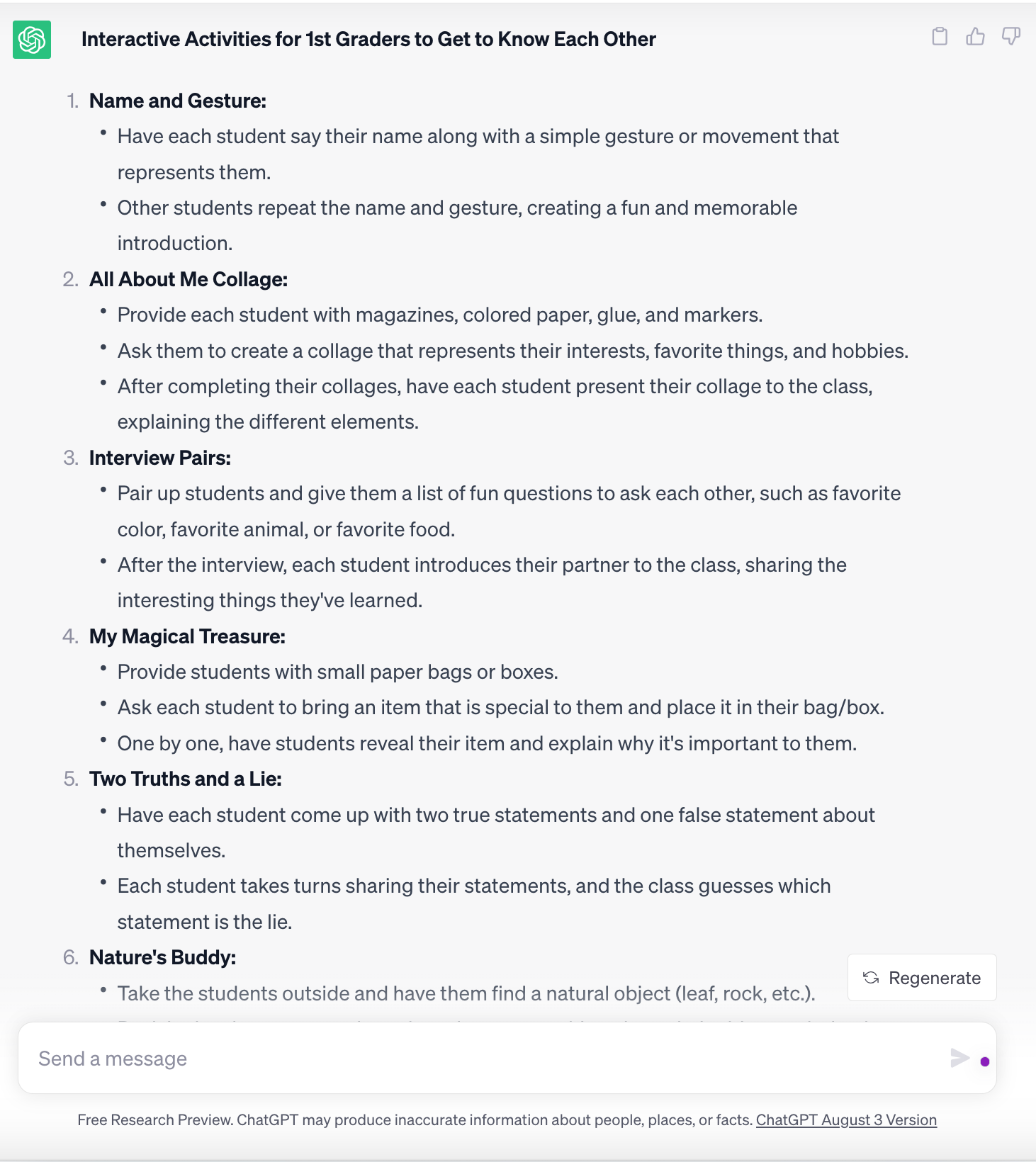
💡 Read Also: How to Use ChatGPT to Summarize an Article
How to implement ChatGPT in the teaching process
Before incorporating new technology into your work, becoming familiar with it is important. To achieve this, principals should organize classes for teachers to learn how to use the tool properly, including its benefits and drawbacks.
Furthermore, schools must establish clear guidelines for the new technology's use. Encourage teachers to use the AI model to understand it more quickly and help them with everyday tasks. Open dialogue about the latest technology encourages teachers to share their experiences, brainstorm creative applications, and collectively address concerns.
Conclusion
The latest technological advancements like ChatGPT are a great aid for teachers. With their versatility, educators can now streamline their daily tasks and focus on guiding and teaching children and building meaningful relationships with them. This will ultimately contribute to the children's overall growth and well-being.

